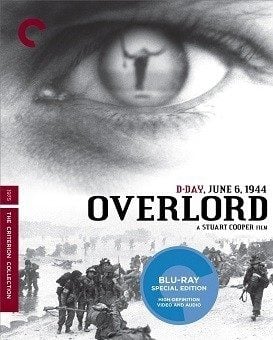Stuart Cooper’s Overlord is one of those conceptual pieces which works in fits and starts but isn’t quite fleshed out enough to have the impact it might have had with a more developed story and more in-depth characterizations. By utilizing astonishing vintage World War II footage from the Imperial War Museum, director Cooper gives his film its primary reason for existence but makes us ache that its touching central character and those who circle his orbit aren’t given the profundity they might have to extend the film’s themes and impact more powerfully.

Studio: Criterion
Distributed By: N/A
Video Resolution and Encode: 1080P/AVC
Aspect Ratio: 1.66:1
Audio: English PCM 1.0 (Mono)
Subtitles: English SDH
Rating: Not Rated
Run Time: 1 Hr. 24 Min.
Package Includes: Blu-ray
keep caseDisc Type: BD50 (dual layer)
Region: A
Release Date: 05/13/2014
MSRP: $39.95
The Production Rating: 3.5/5
Video Rating: 3/5 3D Rating: NA
Audio Rating: 3.5/5
Special Features Rating: 4/5
Overall Rating: 3.5/5
Reviewed By: Matt Hough
Support HTF when you buy this title:





